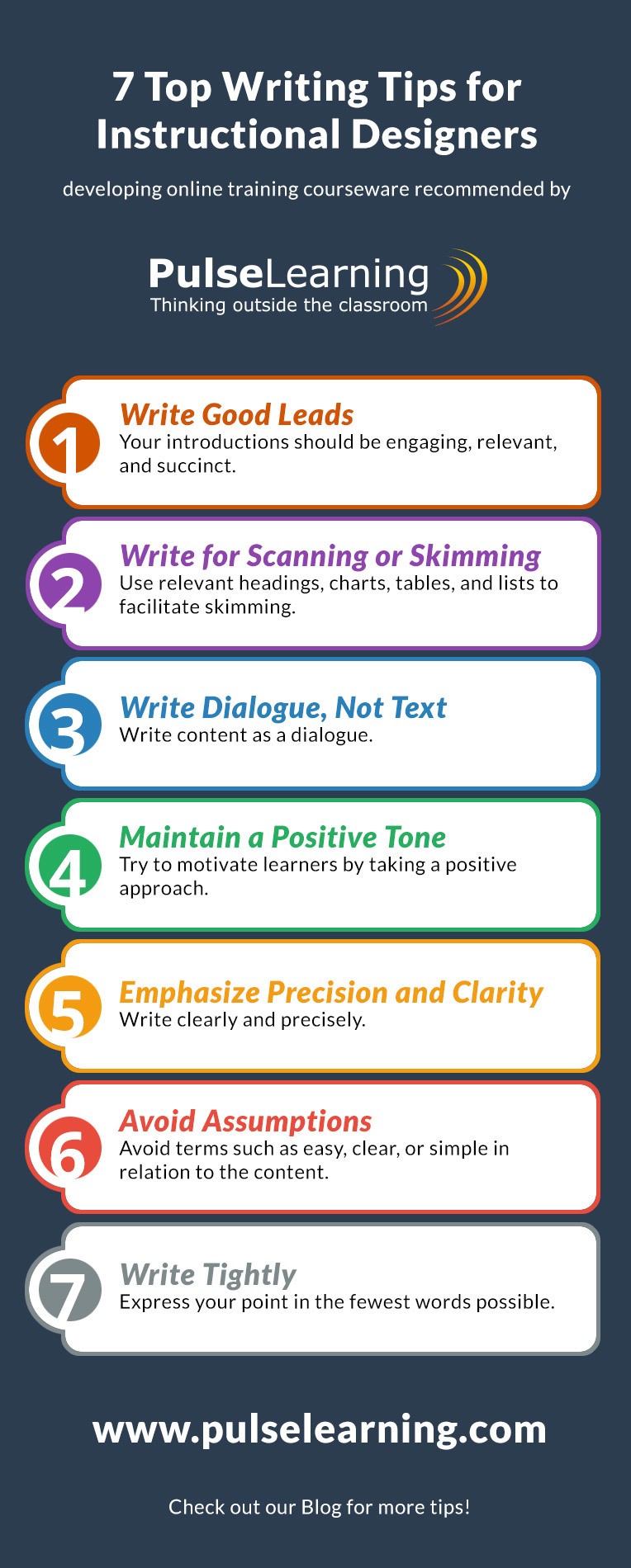Top Writing Tips for Instructional Designers Infographic
The Top Writing Tips for Instructional Designers Infographic presents 7 writing tips for Instructional Designers to consider when developing online courseware.
1. Write Good Leads
Learners are motivated to take a module based on the relevance communicated in the first paragraph. Your introductions should be engaging, relevant, and succinct (ideally 35 to 50 words.) Some popular ways of opening a module are explaining “What’s In It For me?” (WIIFM), linking the content to the information presented in the previous module, providing a quote, etc.
2. Write for Scanning or Skimming
Effective online communication takes advantage of the knowledge that online readers tend to scan text for relevant information and then skim passages of interest. Use relevant headings, charts, tables, and lists to facilitate skimming.
3. Write Dialogue, Not text
Computer-human interaction resembles a dialogue. The computer asks for information; the learner responds. Therefore you need to write content as a dialogue. You should write in the second person. That is, refer to learners as you rather than he or she or the learner. Use short sentences, sentence fragments, and one-word responses.
4. Maintain a Positive Tone
At every level, educators try to motivate learners by taking a positive approach. Online that positive approach is communicated through the general tone of the text and visuals, and through the choice of words. Use neutral words, for “wrong,” but it carries less emotional impact.
5. Emphasize Precision and Clarity
Learners cannot immediately question material they don’t understand in asynchronous learning; therefore it is imperative to write clearly and precisely. Apply the following guidelines:
- Use parallelisms.
- Consider the precise meaning of the words- don’t use words interchangeably.
- Avoid vague expression such as “There are six ways…” instead be direct “Six ways to…”
- Avoid abbreviations that are not expanded
- Avoid the use of etc., i.e., and e.g.
6. Avoid Assumptions
Don’t make assumptions about the ease with which learners will grasp the content by using terms such as easy, clear, or simple. Just because you say so does not mean the learners will find it easy, clear, or simple.
7. Write Tightly
Tight writing means expressing a point in the fewest words possible. Studies indicate that the ideal:
- Sentence length is 15 to 20 words
- Paragraph is five to seven lines
- Topic is one to two screens
- Module is 20 to 25 screens







You can adjust your cookie preferences here.